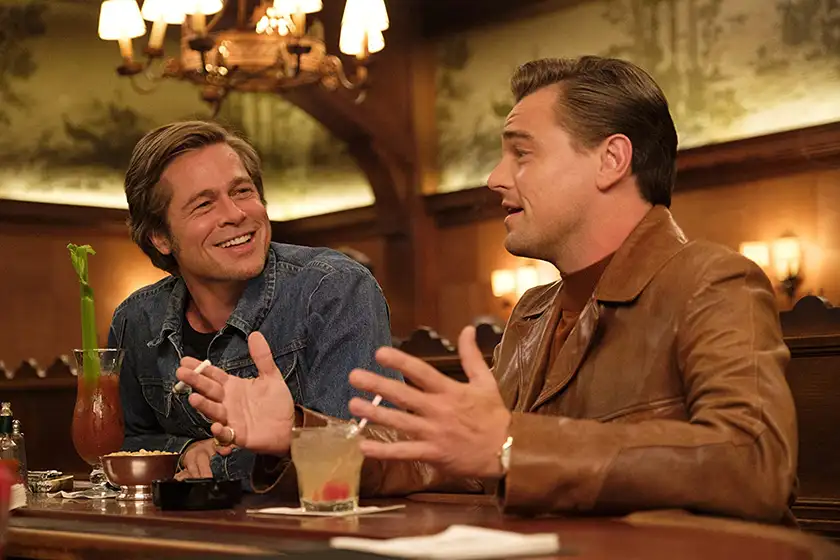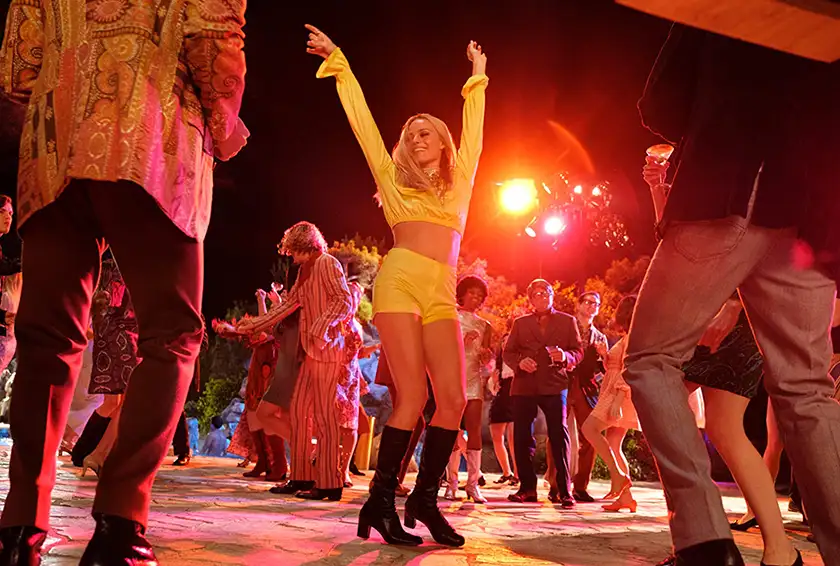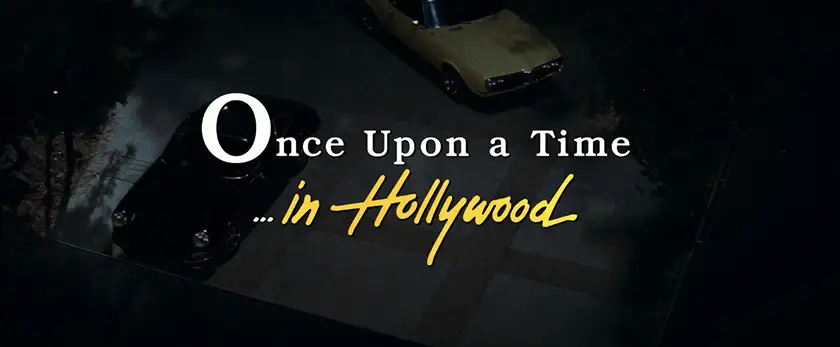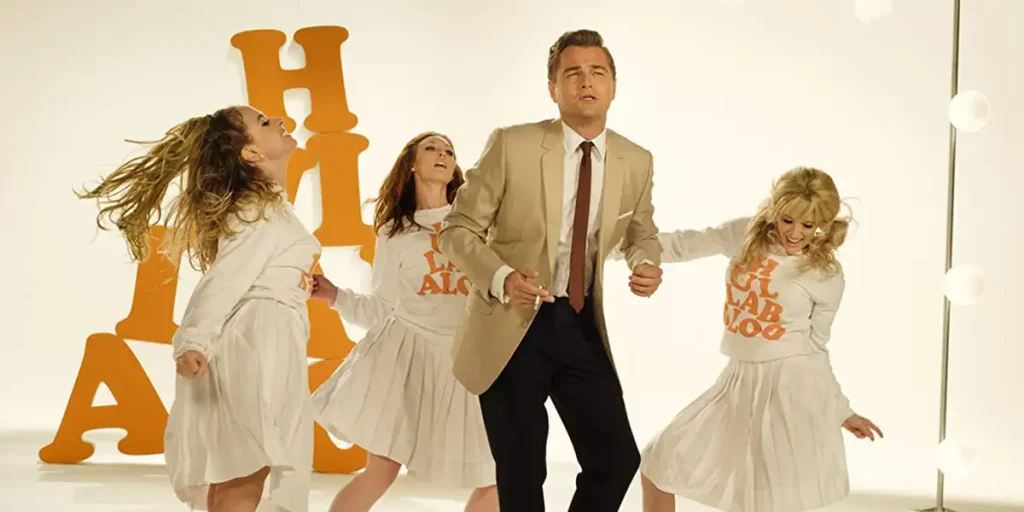Once Upon a Time in Hollywood ’s pining for the past has come to parallel our current longing for lost cinemas in the time of coronavirus.
Years ago, I attended a writing workshop in which I learned of the Welsh word “hiraeth.” It’s a word for which there is no direct English translation, and for this reason, it has been the source of my fervent fascination; it’s truly quite captivating to see how other cultures and communities can wield words that credibly and comprehensively describe complex human emotions that us English speakers are seemingly only capable of clunkily articulating. In its simplest form, “hiraeth” represents the concept of longing for home. However, its full definition is described as a homesickness for a home to which you cannot return, a home which maybe never was – the nostalgia, the yearning, and the grief for the lost places of your past. In many ways, Once Upon a Time in Hollywood is the cinematic illustration of “hiraeth,” and its tristful tale is even more timely in the midst of today’s turmoil.
From the leisurely long takes of Brad Pitt’s Cliff Booth driving down the winding roads of Los Angeles to the wistful and whimsical wonder evoked by Margot Robbie’s flights of fancy as Sharon Tate, Quentin Tarantino’s camera lingers on every last drop of nostalgia and reminiscence present in this recreation of 1969 Hollywood that he has so carefully cultivated, firmly placing audiences in his specific memory of this esteemed era. However, for all its reverential respect for this particular time and place, Once Upon a Time in Hollywood wisely refuses to become a trite exercise in transportive “wish fulfillment.”
Tarantino is more than aware of the fact that his view of this time period is skewed by his own inescapable personal connection to the material, and while he does continually exalt the virtues of this age in film history, he removes his “rose colored glasses” long enough to retrospectively analyze the burgeoning ugly underbelly of late 1960s society and relay a surprisingly sophisticated commentary against the forces that destroyed this idyllic Eden of the entertainment industry. Just as “hiraeth” states, it’s clear that Tarantino wishes with all his might to return to the cinematic utopia of his childhood, but as he’s grown, we can also notice how he has come to understand that his idea of the immortal “golden age of Hollywood” may have never truly existed in the first place, with sinister forces surreptitiously plotting for its downfall at all times.

In Once Upon a Time in Hollywood, there are actually a variety of forces at work that begin to chip away at the initially indestructible foundation of this exuberant era. Evolving audience tastes always serve a purpose in altering the trajectory of the film industry, and aging is a consistent death knell to even the mightiest of stars, something the older Rick Dalton discovers all too well (and this is all without even considering the spreading influence of Charles Manson’s anarchist nihilism plaguing society at the time). Tarantino’s sensitive and shrewd screenplay is full of all the brilliant barbs and banter you expect from his devilish dialogue, all the while simultaneously delivering trenchant truths and reflective ruminations on the feelings of inadequacy and irrelevancy that lost souls (especially lost artistic souls) come to experience as tides change and you shift from one phase of life to another. For this reason, Once Upon a Time in Hollywood is not a film that Tarantino could’ve made at any other point in the career. Truly, this story feels like the culmination of his body of work as an auteur who has felt plentiful trials and tribulations over the course of almost three decades in the industry.
Thus far, it seems that Tarantino has had three distinct “phases” in his filmography. In the 90s, he primarily focused on his unique brand of dialogue-driven crime thrillers (Reservoir Dogs, Pulp Fiction, and Jackie Brown). In the early 2000s, he dabbled in grungy, grindhouse pulp (Kill Bill: Volume 1, Kill Bill: Volume 2, and Death Proof). And from 2009-2015, he released a thematic trilogy of sorts with three intense and incendiary actioners steeped in social commentary (Inglourious Basterds, Django Unchained, and The Hateful Eight). Once Upon a Time in Hollywood doesn’t fit neatly in any of these categories, and although it takes a bit of inspiration from each, it manages to carve out its own special spot alongside these other films, standing, if not necessarily superior, certainly on another level of intellectual stimulation. In a way, this would be an extremely fitting swan song for the iconic film figure, had he not already announced that he still has one project left in him.
Unfortunately, we now have to wonder where exactly we’ll be able to experience Tarantino’s tenth tale, whenever it is eventually released. As society continues to try to combat the calamitous coronavirus with little success, movie theaters and film studios are still sadly struggling to perfect a plan for distribution and exhibition that generates income without putting the general populace at risk. For years, we’ve heard the cries of doom and gloom as streaming services (primarily Netflix) acquired more and more subscribers and made sensational strides in creating content in genres oft ignored by blockbuster-focused Hollywood (such as comedies and romances), but many of us flocked to the latest superhero smash or horror hit without a worry in the world, oblivious to the fact that streamers posed any real risk to the industry at large.

Because of this, at the start of quarantine, I still had a mindset similar to Tarantino’s towards the beginning of Once Upon a Time in Hollywood. I was beside myself, missing the magic of movies and reminiscing on all the magnificent memories I had of my time at the theater. I even specifically thought of Tarantino’s transportive tale and how fabulous it felt to be completely consumed by his cozy California settings right there in the cinema, since there was no way that wonder would’ve held up at home. Regrettably, I too was forced to pick apart my “peachy” perceptions and examine the evils that threatened theaters this whole time – evils I was too quick to overlook. Though my narrow-minded perspective made me maintain that the cinema was an opulent oasis of extravagance and excitement that was unable to be uprooted, I soon came to realize that I was out-of-touch with a society that didn’t embrace these experiences with the same earnestness for the most part. Year by year, less and less people cared for the “connection of cinema,” seeking out streamers or other opposing opportunities for entertainment. I related to Rick Dalton, clinging onto the pleasures of a past and finding myself almost alone in this attempt.
For example, in a summer with no theatrical tentpoles in sight, Netflix, Disney+, and Hulu have dominated the cultural conversation and delivered dynamic diversions on a weekly basis (such as The Old Guard, Hamilton, and Palm Springs), garnering acclaim from audiences around the world. As quarantine lasts far longer than it was ever intended to due to institutional ineptitude, some studios (starting with Universal) have even started to turn to the once-unthinkable “premium video on demand” release strategy, sending theater-level titles (including Trolls World Tour, Scoob!, and The King of Staten Island) straight to homes across the globe. With more and more audiences adjusting to this “modern” manner of observing movies and the public’s fear of coronavirus remaining constant, one has to doubt whether individuals will ever regain their motivation to physically return to movie theaters and when such a shift could potentially occur. This uncertainty is exactly what’s causing films like F9, A Quiet Place Part II, and Top Gun: Maverick to flee all the way to 2021, but even then, we have no idea what the theatrical landscape will look like (or how many theaters will be left standing).
As we think back on the triumph that was 2019 – which gave us nine billion-dollar grossers for the first time ever (Avengers: Endgame, The Lion King, Frozen II, Spider-Man: Far From Home, Captain Marvel, Joker, Star Wars: The Rise of Skywalker, Toy Story 4, and Aladdin) and the highest-grossing film of all time (the aforementioned Avengers: Endgame) – we all find ourselves experiencing our own sense of “hiraeth,” wishing for a return to this resplendent embarrassment of cinematic riches. Who wouldn’t want to relive the riveting revelations of Avengers: Endgame’s colossal climax? How about the staggering stunt work of John Wick: Chapter 3 – Parabellum? And who remembers their audience’s animated and audible reactions to the twisty thrills of Knives Out?

However, if you dig beneath the surface of all this seemingly “sterling” success, you’ll see that theaters haven’t been the “treasured” temples cinephiles claim them to be for quite some time, and the film industry hasn’t been as fortuitous as we thought either. We film fanatics regard the cinema with the utmost respect and reverence we believe it deserves, but this isn’t always the case around the country; theaters have received countless complaints about comfort and cleanliness for what seems like eons, but with the increase in cell phone usage and occasional waste from expensive in-theater dining, distractions and disturbances are more common than ever. If audiences grow accustomed to receiving theater-quality content from their couch, what will lure them back to a conceivably chaotic cinema?
Furthermore, though superhero spectaculars and famed franchises continue to break the bank at the theatrical box office, there has been a considerable lack of attention for the formerly fruitful mid-budget, adult-skewing fare over the past decade or so, while streaming services pick up the slack. In 2019 alone, comedies like Booksmart and Long Shot (from the once reliable Seth Rogen, who led 2014’s Neighbors to a $150 million domestic cume just five years prior) flopped in theaters while Netflix’s Murder Mystery and Always Be My Maybe became social media marvels. Warner Bros. put out an array of adult-led, star-driven stories from diverse talent all fall (The Kitchen, Blinded by the Light, Motherless Brooklyn, Doctor Sleep, The Good Liar, Richard Jewell, and Just Mercy), but almost all were outright ignored in favor of flicks from “familiar” franchises, like It Chapter Two and Joker. Theaters are becoming a haven for only the biggest blockbusters, with little room for anything else.
Though I don’t believe theaters will ever “disappear” entirely, it’s clear by this point that they won’t ever look or feel the same as they did pre-COVID. Changes are coming, and the industry will be forced to adapt or die. And despite all of our nostalgia for the former “normal,” the theme of Once Upon a Time in Hollywood resonates now more than ever, one year after its release – as hard as it may be, we can’t cling onto our picture of the past forever, as we’re likely living in an imagined ideal that never resembled reality in the first place. Once upon a time, in a world where everything went right, we may have been able to avoid all of the adversity and affliction we’re currently confronting, but at the end of the day, we have to live in the here and now and contend with today’s troubles head-on. We can’t even solely blame coronavirus; sooner or later, these strains were bound to stretch too far. Now, they’re simply impossible to ignore.
I can’t pretend to have all the answers for the tortured theater owners and struggling studio heads, but my only advice is this: the key to triumph lies not in the time gone by, but in the time to come. The “promised land” of the past is long gone, and it may have never truly existed; we must look forward to the future for any further fortune.
Once Upon a Time in Hollywood is now available to watch on digital and on demand, and on DVD and Blu-Ray.

